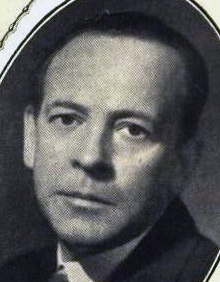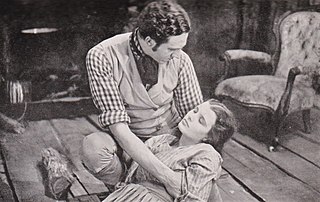
"Waltzing Matilda" is a song developed in the Australian style of poetry and folk music called a bush ballad. It has been described as the country's "unofficial national anthem".
Efftee Studios was an early Australian film and theatre production studio, established by F.W. Thring in 1930. It existed until Thring's death in 1935. Initially Efftee Films was based in Melbourne and used optical sound equipment imported from the US.

Cinesound Productions Pty Ltd was an Australian feature film production company, established in June 1931, Cinesound developed out of a group of companies centred on Greater Union Theatres, that covered all facets of the film process, from production, to distribution and exhibition.

Frank Harvey was a British-born actor, producer, and writer, best known for his work in Australia.
His Royal Highness is a 1932 Australian musical film directed by F. W. Thring, also known as His Loyal Highness, starring George Wallace in his feature film debut. It was the first Australian film musical.
George Patrick "Pat" Hanna was a New Zealand-born film producer, he was a soldier of the First World War who entertained post-war audiences with the stage show Diggers, that was adapted to a film of the same title in 1931.
Arthur Embery Higgins was a pioneering Australian cinematographer known for his use of trick photography during the silent era. His ongoing collaborations with director Raymond Longford include The Sentimental Bloke (1919) and The Blue Mountains Mystery (1921). He briefly turned to directing with Odds On (1928) however returned to cinematography in 1931 for the remainder of his career.

Heritage is a 1935 Australian historical film directed by Charles Chauvel.
A Ticket in Tatts is a 1934 musical comedy film starring popular stage comedian George Wallace as an accident-prone stablehand. It was the last of three films Wallace made for F. W. Thring.

Francis William Thring III, better known as F. W. Thring, was an Australian film director, producer, and exhibitor. He has been credited with the invention of the clapperboard.
Diggers is a 1931 Australian comedy film produced and directed by F. W. Thring starring popular stage comedian Pat Hanna. It was the first feature film from both men.
Diggers in Blighty is a 1933 Australian film starring and directed by Pat Hanna. Hanna decided to direct this film himself after being unhappy with how F. W. Thring had handled Diggers (1931).
Joseph George McParlane, known as Joe Valli, was a Scottish-Australian actor who worked in vaudeville and films. He had a long-running vaudeville partnership with Pat Hanna as "Chic and Joe".

The Streets of London is a 1934 Australian film directed by F. W. Thring. It was a filmed version of a play by Dion Boucicault which Thring had produced on stage the previous year. It was the last film made by Efftee Film Productions – Thring ceased production afterwards with the aim of resuming it later but died in 1936 before he had the chance.
Clara Gibbings is a 1934 Australian film directed by F.W. Thring about the owner of a London pub who discovers she is the daughter of an earl. It was a vehicle for stage star Dorothy Brunton.
The Sentimental Bloke is a 1932 Australian film directed by F. W. Thring and starring Cecil Scott and Ray Fisher. It is an adaptation of the 1915 novel Songs of a Sentimental Bloke by C. J. Dennis, which had previously been filmed in 1919.
Sheepmates was a proposed Australian film from director F. W. Thring based on a 1931 novel by William Hatfield.
When the Kellys Rode is a 1934 Australian film directed by Harry Southwell about Ned Kelly.
When the Kellys Were Out is an Australian feature-length film directed by Harry Southwell about Ned Kelly. Only part of the film survives today.

Mabel Wennstrom Gibson was an Australian singer and actor, best known for playing in musicals and operettas.






